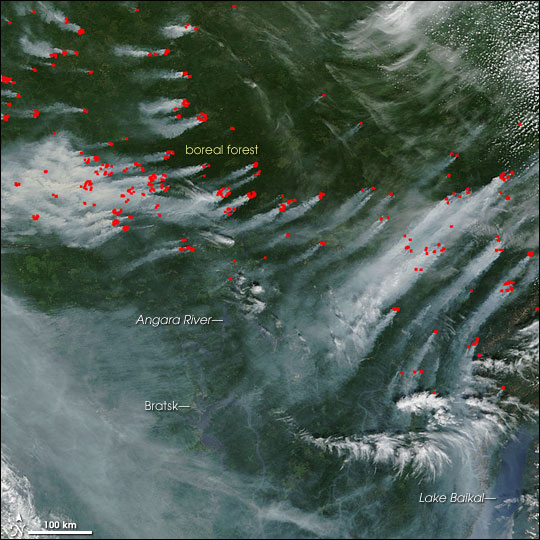
NASA
Want a quick recipe for reducing Arctic ice melt fast? Stop burning northern hemisphere farmlands and pasturelands.
New research finds that large-scale agricultural burning in Russia, Kazakhstan, China, the US, Canada, and the Ukraine is melting Arctic ice.
The big contributor: Spring burning, when farmers torch crop residues and brush to clear new land for crops and livestock. The black carbon soot produced by these fires flows north, warms the surrounding air, and absorbs solar energy when it falls on ice and snow.
How bad is the problem? Springtime burning may account for 30 percent of Arctic warming to date.
The good news is there’s an easy fix. Targeting these burns gets us a genuinely fast reduction in temperature over the Arctic. Plus we know how to control these pollutants right now. Just stop burning. Right now. Before the melting ice rewires the oceanic currents delivering us the climate we’re used to.
The research is part of POLARCAT, an international effort to track the transport of pollutants into the Arctic from lower latitudes. Researchers were surprised to find 50 smoke plumes that analysis of satellite images revealed came from agricultural fires in Northern Kazakhstan and Southern Russia and from forest fires in Southern Siberia. The emissions from these fires far outweighed those from fossil fuels.
“These fires weren’t part of our standard predictions, they weren’t in our models,” says Daniel Jacob, a professor of atmospheric chemistry and environmental engineering at Harvard.
Although global warming is largely the result of excess accumulation of carbon dioxide, the Arctic is highly sensitive to short-lived pollutants like black carbon. Forest fires, agricultural burning, primitive cookstoves, and diesel fuel are the primary sources of black carbon.












